A CONTEMPORARY OF ELMER KEITH, HE DESERVES ANOTHER LOOK
WRITTEN BY JOHN TAFFIN
I was still a junior in high school when GUNS Magazine first appeared in January 1955. The printed page had a major effect on me, especially some of the earlier writers such as Elmer Keith and Kent Bellah. Early 1959 was an especially influential time as I not only married in February but the April GUNS issue resulted in my first introduction to Walter Rodgers. I would guess most readers know who Elmer Keith was, however, I doubt if very many ever heard the name Walter Rodgers. His first article was entitled: “Take Your Time — Fast!”
Real Cowboy
Walter Rodgers was a contemporary of Elmer Keith. Elmer was born in 1899 and Rodgers published a book in 1916 entitled The Trail Drivers of Texas, so from those two dates I am assuming Rodgers was older. He spent his life mostly packing a sixgun and living in the saddle, working cattle, animal control and law enforcement in Texas and New Mexico. Along the way he learned much about gun handling, what worked and what didn’t. When I first encountered him in print, I was already well on my way to knowing single-action sixguns and leverguns were my favorites. Rodgers didn’t start me on the path but he certainly confirmed what I already knew.
I had chosen single-actions and leverguns for several reasons, not the least of which was what Rodgers called “Gun Feel.” For my hand, as for thousands upon thousands of others, the best-feeling sixgun has always been a Single Action. The same feeling extends to rifles which are operated with a lever and have a very flat profile. Rodgers wrote of Colt Single Actions and then Ruger Blackhawks. One of the things he wrote I really appreciated was: “Bless Bill Ruger for putting Magnums in real working sixguns.” When it came to rifles he was particularly fond of the Winchester 1892 in .32-20, and the Model 1894 in .25-35 and .30-30. All real working guns.
Learning The Old Way
In 1959 Rodgers related: “Way back in the wild and rugged trans-Pecos province of Texas, known as the Big Bend country, in a very early part of this century, I was banging away at some tin cans back of my camp with an old Single Action Army Model Colt sixshooter. I had a cutaway holster strung on an old Ranger Scout belt, and though I wasn’t puncturing many cans, I was sure wearing the hide on my right thumb. I holstered the gun after each shot then went back frantically after it for the succeeding shot.
‘Now yuh’re dead,’ said a drawling voice behind me right after I’d emptied my gun. I whirled in surprise, for I was so engrossed with my draw-and-shoot practice I hadn’t heard the old Ranger walk up behind me. He grinned and shook a chiding finger at me. ‘Never let a gun run dry,’ he said. ‘Reload after the third shot, and you’ll not get caught with yore britches down.’
He flipped a fistful of .45 caliber cartridges from his own belt, and told me to reload. I did. ‘Now,’ he said, ‘let’s see you make that grab draw again.’ Whirling towards my target (I was kinda proud of my gun speed by now) I made a fair draw and missed my target. ‘The best of us miss now an’ then,’ he comforted me. ‘Do it agin.’ I holstered my gun, dove after it again, and fumbled my draw. The gun just wasn’t in the right place.
‘I was looking for that,’ the Ranger said seriously. ‘Now, if’n it was possible for a feller to die twicet, this would be yore second death in a gunfight. That grab draw just is no-wise dependable. Always remember, yore hand ain’t got no eyes. Maybe hit’ll find the gun, and maybe hit won’t. Let yore fingers guide your hand to the gun, and don’t get in such a hell-fire hurry.’ That was in my first dependable, straight-from-the-horses mouth advice in gun-handling.”
Time Passes
It was probably 40 years earlier when Rodgers learned this and it has now been over 60 years since he passed it on to me. Wearing the gun high on the belt and letting my fingers come up the holster to the sixgun is just the opposite of what was being taught at the time both by Hollywood and the sport of Fast Draw, neither of which were reality.
Rodgers not only inspired me as far as single-action sixguns and leverguns, he also made his own holsters and belts and this was a further inspiration to me as I started making my own shortly after reading his first article.
Rodgers’ much-used Colt Single Action was a mite out of the ordinary. It was not a standard Colt Single Action Army but rather the Bisley Model introduced in the 1890s. The Bisley Model featured a wider target-style hammer and trigger as well as a larger grip more conducive to target shooting. Ruger brought out their version of the Bisley Model in the mid-1980s and since then many dedicated Sixgunners have fitted their standard Blackhawks with Bisley hammers.
One way to do it is to make the modifications necessary to fit a Bisley hammer, however another way is to cut the hammer spur off of the Bisley hammer and weld it on to a standard Single Action hammer. What fascinated me about Rodgers’ Single Action is the fact he went the opposite direction.
“The Bisley Colt had the original prong cut off, and the prong from an Army Model S.A. Colt welded on in its place. I made the grips from a section of old hickory taken from an old wagon wheel long discarded at a homesteader’s dugout in New Mexico. In repeat shots, it is much slower than the Army Model, but it can be used with amazing speed on the draw and first shot, and is very accurate,” Rodgers wrote.
After first encountering Walter Rodgers in GUNS MagazineRifleman magazines accumulated by her husband. You can bet they did not go directly to the dump! I went through every one, clipping articles I wanted to save. I wound up with Elmer Keith’s articles on sixguns as well as the writings of Walter Rodgers and several others, all of which may seem dated but are actually timeless.
I discovered many of Rodgers’ works were put into book form and did a search, expecting to pay dearly if I found a copy. A search for Rodgers’ book revealed an excellent copy can be had for under $20 compared to hundreds for Elmer Keith. Apparently, he hasn’t really been discovered yet. His book is titled Huntin’ Gun and speaks of Men, Gun Feel and Game. Even if you’re not an old dinosaur like me, I would be real surprised if you didn’t enjoy reading the thoughts of Walter Rodgers.

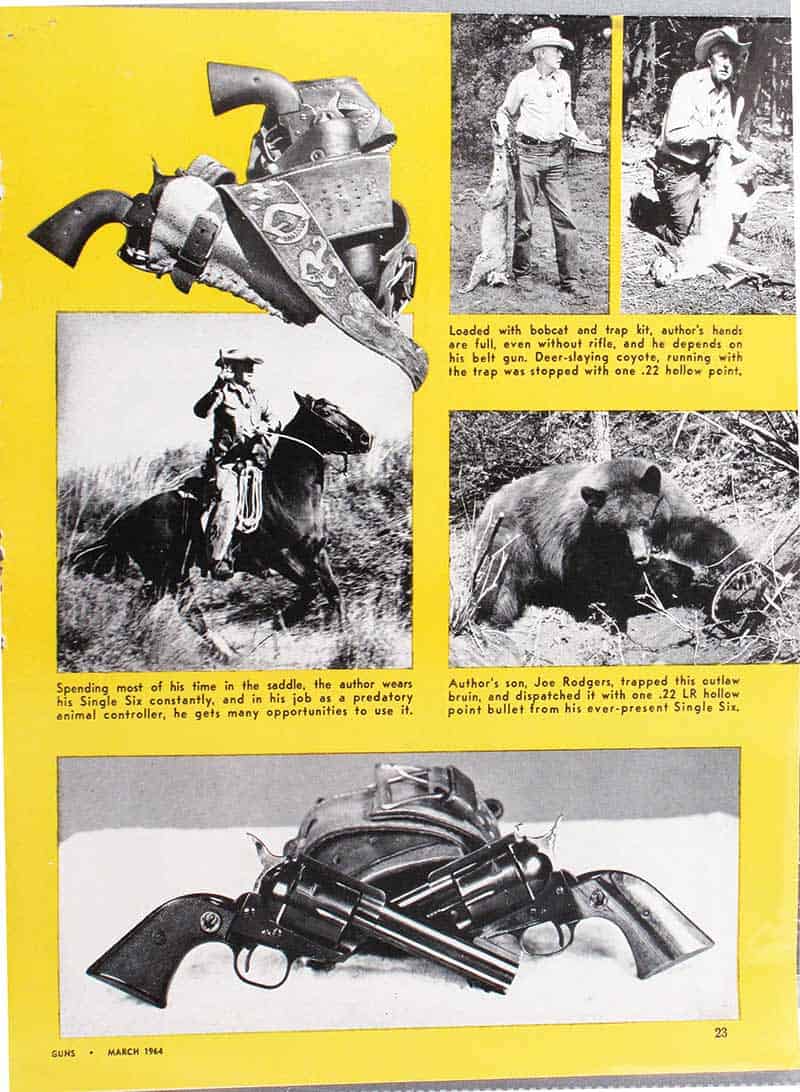
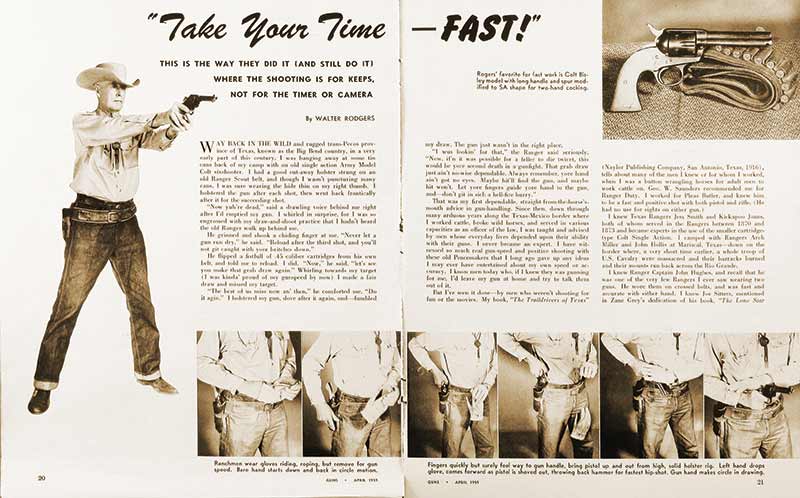
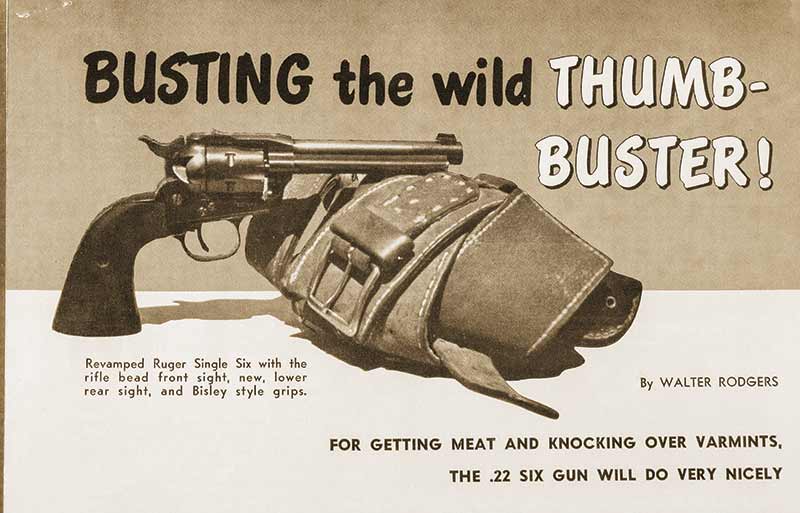

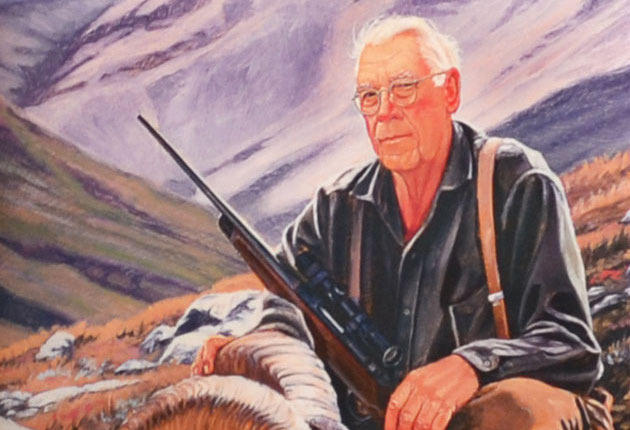
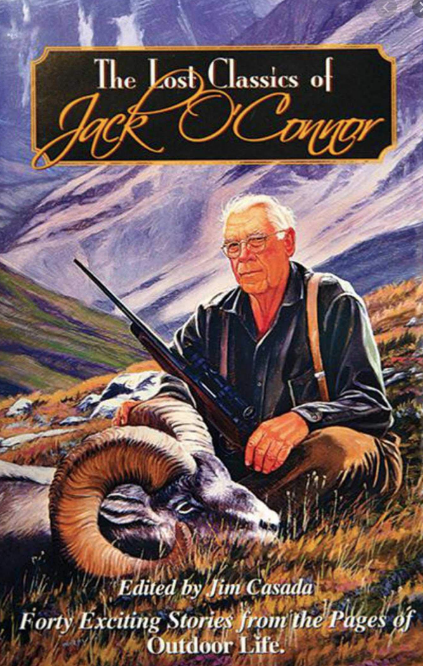 Other writers have had greater technical knowledge, hunted more, and helped develop new calibers and loads, but, when it comes to writing for the average shooter,
Other writers have had greater technical knowledge, hunted more, and helped develop new calibers and loads, but, when it comes to writing for the average shooter,  Keith both despised and was the antithesis of O’Connor. He liked guns that had punch and produced lots of noise and recoil. While only marginally literate, he told gripping tales; shot a lot; and, with the help of excellent editors, garnered a huge following. The title of his autobiography, Hell, I Was There!, offers a window into his personality, while Sixguns and Big Game Rifles and Cartridges also merit attention. The little man in the big cowboy hat could be obstinate and ornery, but there’s no denying that he could entertain.
Keith both despised and was the antithesis of O’Connor. He liked guns that had punch and produced lots of noise and recoil. While only marginally literate, he told gripping tales; shot a lot; and, with the help of excellent editors, garnered a huge following. The title of his autobiography, Hell, I Was There!, offers a window into his personality, while Sixguns and Big Game Rifles and Cartridges also merit attention. The little man in the big cowboy hat could be obstinate and ornery, but there’s no denying that he could entertain.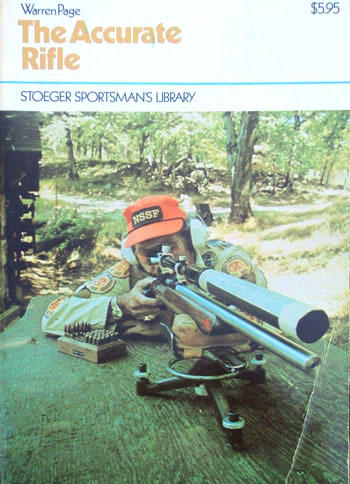 Likeable in print and the ultimate curmudgeon in person (the latter is by no means unique to Page among gun writers), he served as the shooting editor for Field & Stream for a quarter of a century, beginning in 1947, and helped develop the .243 Winchester. His two key books, One Man’s Wilderness and The Accurate Rifle, should be more widely read than they are today.
Likeable in print and the ultimate curmudgeon in person (the latter is by no means unique to Page among gun writers), he served as the shooting editor for Field & Stream for a quarter of a century, beginning in 1947, and helped develop the .243 Winchester. His two key books, One Man’s Wilderness and The Accurate Rifle, should be more widely read than they are today.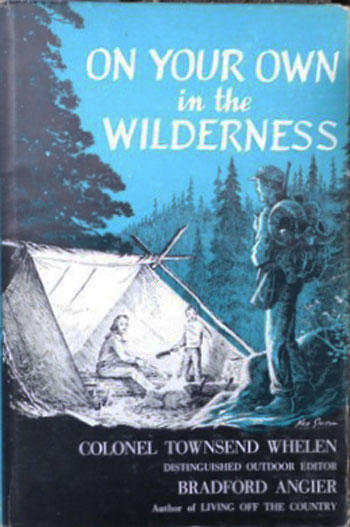 If you asked me which of the old-time gun writers I’d most like to have spent time with, “Townie” Whelen would win, hands down. He was the master of practicality, and every avid outdoorsman should read his On Your Own in The Wilderness (with Bradford Angier) and Mister Rifleman, an autobiographical work that Angier also helped complete. Whelen’s other books of note include The American Rifle, Big Game Hunting, Why Not Load Your Own!, The Best of Colonel Townsend Whelen, The Ultimate in Rifle Precision, and Amateur Gunsmithing. Perhaps no quotation by a gun writer has been repeated more frequently than his suggestion that “only accurate rifles are interesting.”
If you asked me which of the old-time gun writers I’d most like to have spent time with, “Townie” Whelen would win, hands down. He was the master of practicality, and every avid outdoorsman should read his On Your Own in The Wilderness (with Bradford Angier) and Mister Rifleman, an autobiographical work that Angier also helped complete. Whelen’s other books of note include The American Rifle, Big Game Hunting, Why Not Load Your Own!, The Best of Colonel Townsend Whelen, The Ultimate in Rifle Precision, and Amateur Gunsmithing. Perhaps no quotation by a gun writer has been repeated more frequently than his suggestion that “only accurate rifles are interesting.”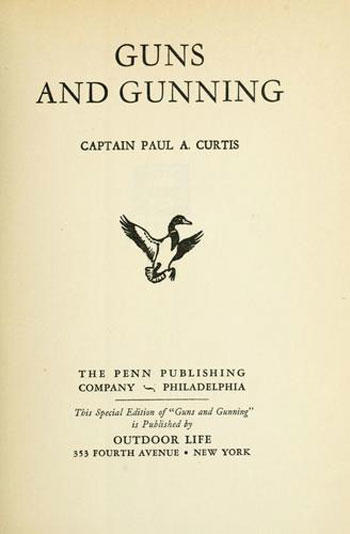 This name will likely be unfamiliar to many sportsmen, but, in the golden era of gun and hunting writers, Curtis was one of the best. For two decades, from the end of World War I until he committed suicide (an all-too-common occurrence among gun writers), Curtis was a major presence in national magazines. He wrote five books, but Guns and Gunning and Sporting Firearms of Today in Use are of the greatest interest.
This name will likely be unfamiliar to many sportsmen, but, in the golden era of gun and hunting writers, Curtis was one of the best. For two decades, from the end of World War I until he committed suicide (an all-too-common occurrence among gun writers), Curtis was a major presence in national magazines. He wrote five books, but Guns and Gunning and Sporting Firearms of Today in Use are of the greatest interest.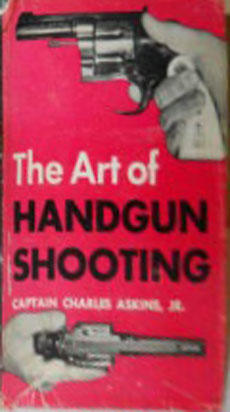 Since Charles Askins, Sr. was a gun writer, as well, the two Askins are easily and often confused. However, the younger was more prolific than his father, though the latter wrote a first-rate book about shotguns. The best place to start with Askins, Jr. is Unrepentant Sinner, his autobiography. By all accounts he was a highly temperamental man, involved in shenanigans that would result in hard time today, but there’s no doubting his expertise in works such as The Art of Handgun Shooting, The Gunfighters, and The African Hunt.
Since Charles Askins, Sr. was a gun writer, as well, the two Askins are easily and often confused. However, the younger was more prolific than his father, though the latter wrote a first-rate book about shotguns. The best place to start with Askins, Jr. is Unrepentant Sinner, his autobiography. By all accounts he was a highly temperamental man, involved in shenanigans that would result in hard time today, but there’s no doubting his expertise in works such as The Art of Handgun Shooting, The Gunfighters, and The African Hunt.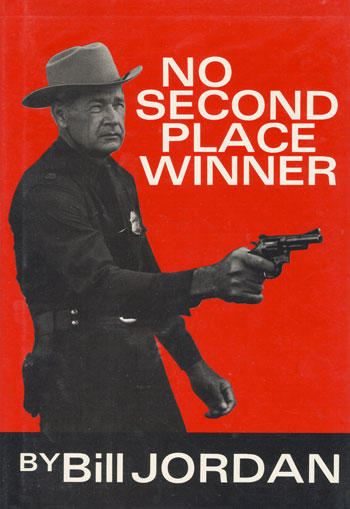 Jordan was nowhere as prolific as the other writers on this list, but his first-hand experiences were in a class of their own; there may never have been a man faster with a handgun. His book, No Second Place Winner, has become a must-read for police-handgun enthusiasts, but you’ll need to dig up his magazine writings to really gain an appreciation for him. Someone could do his legacy and the shooting world a favor by anthologizing these pieces.
Jordan was nowhere as prolific as the other writers on this list, but his first-hand experiences were in a class of their own; there may never have been a man faster with a handgun. His book, No Second Place Winner, has become a must-read for police-handgun enthusiasts, but you’ll need to dig up his magazine writings to really gain an appreciation for him. Someone could do his legacy and the shooting world a favor by anthologizing these pieces.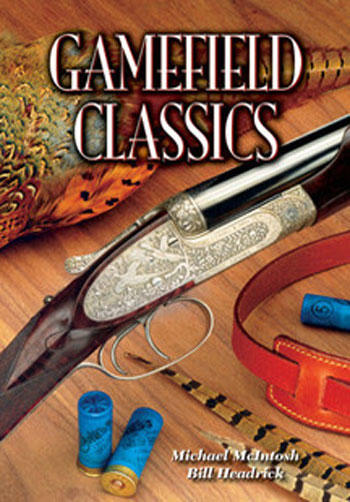 McIntosh is the only writer listed here whom I knew personally, as we were both longtime columnists for Sporting Classics. McIntosh wrote with grace and a distinctive style, and he really knew shotguns. Mind you, his interests and knowledge ranged widely, but posterity will likely remember him, first and foremost, as a shotgun writer. His major works include
McIntosh is the only writer listed here whom I knew personally, as we were both longtime columnists for Sporting Classics. McIntosh wrote with grace and a distinctive style, and he really knew shotguns. Mind you, his interests and knowledge ranged widely, but posterity will likely remember him, first and foremost, as a shotgun writer. His major works include 